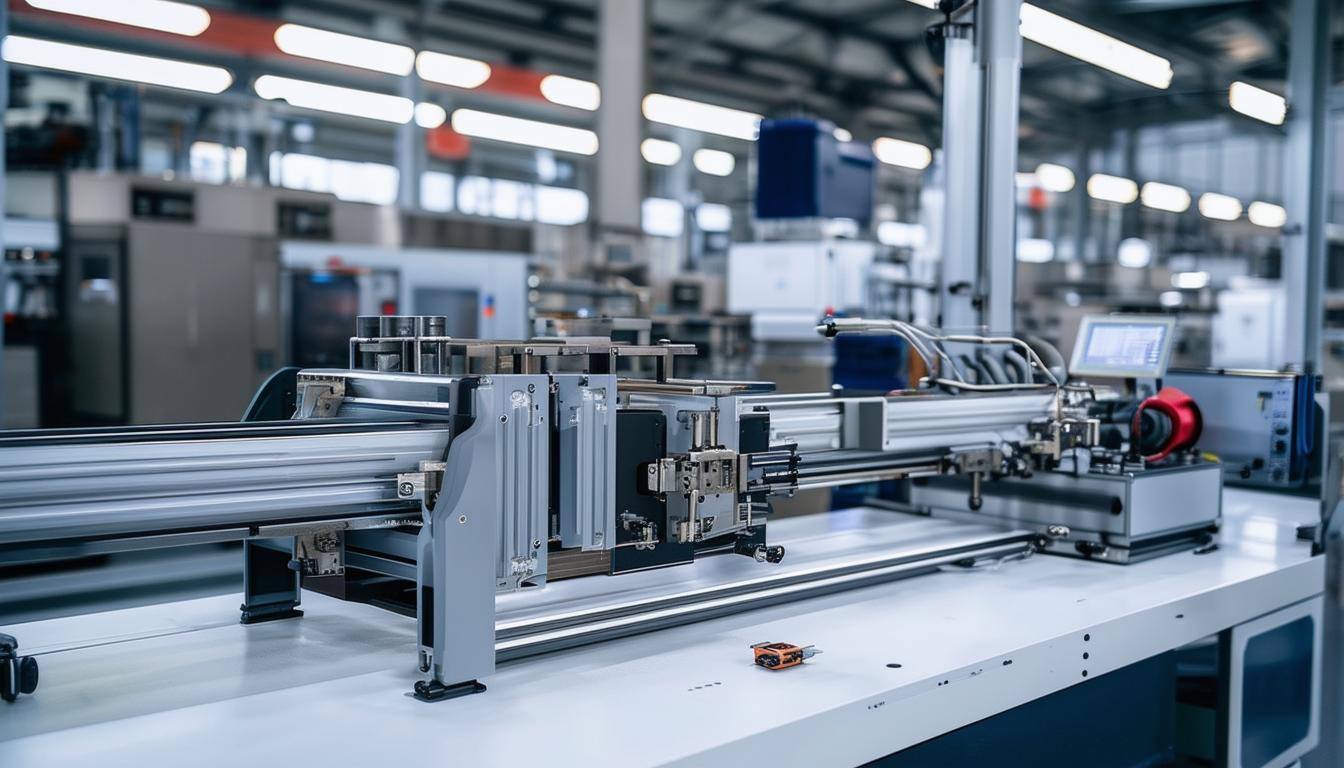PlantStar BLOG
What Does OEE Really Mean, and How Can I Optimize It?
Jul 18, 2025 4:45:00 PM / by David Crowley

In today’s fast-paced manufacturing environment, efficiency isn’t just nice to have; it’s essential for success. Manufacturers everywhere are under pressure to produce more faster and with fewer resources—all while maintaining high product quality. This is why optimizing overall equipment effectiveness (OEE) is key to staying ahead of the competition. If you're not measuring and optimizing OEE, you're missing out on important opportunities to cut costs and increase production efficiency without sacrificing quality. In this article, we explore what OEE really means, why it matters, and how the right manufacturing execution system (MES) can help you take control of it.
What Is OEE?
OEE is the key to measuring productivity in your manufacturing facility. It quantifies how effectively a machine, line, or plant is performing by considering three variables: availability, performance, and quality.
- Availability is the percentage of time machines are actually running during planned operation. It’s calculated by dividing this uptime by the total scheduled running time (uptime/uptime + downtime).
- Productivity is a measure of how close actual production is to an ideal production rate, expressed as a percentage. It’s calculated by dividing the actual number of parts produced within in a given timeframe by the optimal number that could be produced (actual production/optimal production).
- Quality reflects the percentage of a batch of produced parts that are of acceptable quality. It’s calculated by dividing the number of acceptable parts by the total number of parts produced (good parts/total parts).
OEE is calculated by multiplying these three variables together:
OEE = Availability × Productivity × Quality
Many manufacturers still either don’t track OEE at all or use time-consuming and error-prone manual methods to do so. The right manufacturing execution system (MES) makes it easy to continually track OEE by providing real-time data and analytics, keeping you abreast of how your machines are performing at all times.
OEE Benchmarks: How Does Your Plant Compare?
Once you’ve calculated your plant’s OEE, you can look at commonly used benchmarks to get a sense of where you are now and set goals for the future. While 100% represents perfect OEE, a score of 85% is considered world class. An OEE score of 60% is fairly typical for manufacturers, and this also leaves considerable room for improvement. It’s not uncommon for manufacturers who are just starting to track OEE to find they’re only around 40%. If this describes your plant, don’t worry; it’s often easy to improve a score like this by simply identifying and addressing causes of downtime. As you begin to discover what’s dragging down your OEE numbers, you can tackle those issues head on and quickly begin to see upward movement.
How to Optimize OEE with an MES
A manufacturing execution system streamlines the process of optimizing OEE by providing ongoing, real-time insight into a wide range of production and process data. MES platforms have specific monitoring capabilities, including
- OEE tracking
- Real-time production data
- Cycle time
- Reject percentages
- Downtime tracking
Capturing these data is the first step in taking control of your OEE.
Many MES solutions can be seamlessly integrated with enterprise resource planning (ERP) software for end-to-end visibility, providing a holistic view of the operation from the supply chain through production and delivery. This makes your organization more agile and adaptable to changes and enables just-in-time production for even greater efficiency and cost savings.
Additionally, an MES can send instant alerts via text or email when data falls outside defined parameters. For example, if a reject percentage suddenly spikes or the cycle time slows considerably, appropriate personnel can be promptly notified so they can intervene and get everything flowing efficiently again. Customizable reports make it easy for decision-makers to drill down into the data to get the specific insights they need.
Track and Reduce Downtime
Downtime is among the biggest drains on OEE, and it often goes untracked or miscategorized. An MES allows you to track downtime accurately in real time and appropriately categorize the reasons for downtime. This allows you to attack the biggest culprits first to make an immediate impact on OEE. In addition to production monitoring, process monitoring capabilities can use sensor data to detect when a machine is likely to fail, empowering you to implement a predictive maintenance program that prevents downtime by allowing staff to schedule needed maintenance when it will have the least impact on production.
Minimize Rejects
An MES can track rejected parts per job, sub-job, or shift and allow operators to easily enter reasons for rejects. It can display rejects for all machines in the plant or for selected machines. In this way, managers can zero in on when, where, and how issues are arising. Whether it’s a tooling issue, operator error, or material inconsistency, being able to instantly visualize reject data allows managers to respond and correct problems quickly rather than analyzing them after the production run is complete.
Start Small
OEE optimization isn’t about making sweeping changes all at once. Start by making small, strategic moves based on the real-time data your MES delivers. You can begin with a single machine or production line where you notice performance is slipping. For example, you might be seeing recurring downtime or a quality concern tied to specific products. Once you’ve identified the issue, make a change aimed at resolving it and monitor the results. If you see progress, you can scale your interventions from there. If, on the other hand, you don’t see the improvement you hoped for, you can adjust your strategy before investing the time and resources in implementing the change more widely.
The Advantages of PlantStar 4.0
PlantStar's 4.0 is a web-based solution that allows staff to view all performance metrics in real time from any device that’s connected to the network. In many facilities, these data are displayed on large-screen monitors for easy viewing on the go—without having to take the time to log in individually and divert attention to a small device. Additionally, data can be viewed by shift, allowing managers to laser focus on when problems are occurring and more effectively identify and address issues like downtime and scrap.
PlantStar’s real-time machine status dashboard continuously provides the data you need to optimize OEE. Reports are customizable, so you can set them up to display the insights you need to implement changes with confidence, track the results in real time, and continually optimize your facility’s OEE.
Are you ready to learn more? Check out our case studies to learn how we’ve helped facilities like yours reduce costs, increase efficiency, and optimize OEE.
Subscribe to Email Updates
Posts by Topic
- Manufacturing Execution Systems (38)
- manufacturing solutions (16)
- MES 101 (13)
- Industry 4.0 (11)
- improve efficiency (10)
- Plastic Molding (9)
- Plastics Technology (9)
- mes software (9)
- mes solutions (9)
- MES hardware (8)
- Shop Floor Production (8)
- digital transformation (7)
- Reduce scrap (6)
- data-driven-decisions (6)
- Medical molding (5)
- lean manufacturing (5)
- process monitoring (5)
- product quality (5)
- lights-out manufacturing (4)
- manufacturing dashboard (4)
- production monitoring (4)
- ERP integration (3)
- Shop Floor Safety (3)
- supply chain management (3)
- Injection Molding Technology (2)
- defect collection (2)
- machine mes (2)
- process variables (2)
- digital strategy (1)
- labor gap (1)
- throughput (1)


